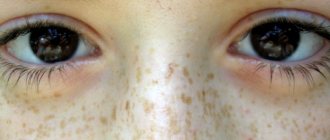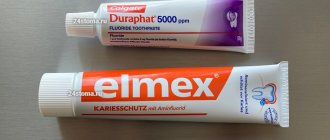At the height of the summer season, I want to talk about melanin, the pigment responsible for the color of the skin. Melanin is formed in melanocytes - skin cells, in which pigment is formed from the amino acid tyrosine as a result of a chain of biochemical reactions involving tyrosinase and other enzymes. Melanin accumulates in melanosomes. Melanosomes transmit pigment through melanocyte processes (dendrites) to the upper layers of the epidermis.
Melanin: what is it?
Many people wonder what melanin is in simple terms, what is it for, how does it affect the body?
This is a high-molecular pigment, the concentration, variety and distribution of which determines the color of hair, skin, and eye color. The more it is, the richer and darker the shade.
There are 3 types of melanins:
- eumelanins;
- pheomelanins;
- neuromelanins.
The first ones have a brownish, black color. The latter are distinguished by their yellow, red-yellow color and give a pink or red tint to the lips, genitals, and nipples.
If the hair contains pheomelanins, it has a red color. Both the first and second are produced by melanocytes of the iris, retina, hair follicles, and skin.
Dermatologist Samir Bashey
Four or five genes are responsible for the synthesis of pigments in the epidermis. The number of active genes determines the intensity of pigment production.
As for the third type of pigments - neuromelanins, they are produced in the brain. Their functions are still unknown.
According to modern concepts, the pigment has antioxidant properties. It has been found that in Parkinson's disease, an active decrease in the concentration of dopamine neurons and neuromelanin occurs in the brain. As a result, a connection can be traced between the development of this disease and the neurodegradation of pigment in the brain.
Eye color depends not only on the type of melanin, but also on the characteristics of its distribution in the layers of the iris and concentration.
If the pigment is present exclusively in the 4-5 layer, then a blue, blue color is observed.
If melanins are located in the anterior layers of the iris, then the person has yellow-brown or brown eyes. If there is uneven distribution in the anterior layers, then the color is gray or green.
How is melanin synthesis regulated?
Melanocyte-stimulating hormone is a powerful stimulator of melanogenesis. It is synthesized by epidermal keratinocytes. The production of this hormone is triggered by ultraviolet radiation.
Endothelin-1 induces melanogenesis by activating tyrosinase and by proliferating melanocytes and increasing dendrite formation. UV irradiation stimulates the production of endothelin in keratinocytes.
Stem cell factor. Like other factors produced by keratinocytes, it is induced by ultraviolet radiation.
Mediators of inflammation. Some inflammatory mediators can affect skin pigmentation. Prostaglandins and leukotrienes, being mediators of the inflammatory response, also affect the function of melanocytes. Their levels are elevated in tanned skin, as well as in various inflammatory dermatoses, which is why we see post-inflammatory hyperpigmentation so often.
Having analyzed these reasons, we understand how UV radiation causes tanning, the so-called skin coloration, exceeding the initial level. Simply put, we get skin pigmentation that provides protection from further UV radiation. A tan appears within 3-4 days after exposure to ultraviolet radiation. Its appearance is influenced by both UVB (320-400 nm) and UVA (280-320 nm) ranges of sunlight. In tissues at this moment there is an increase in the number of melanocytes in the epidermis, an increase in the number of processes and the transfer of melanosomes to keratinocytes. In general, the total melanin of the epidermis is increased, which provides additional photoprotection from UV radiation.
Melanin function (3 pluses)
Let's look at the beneficial functions of melanins to better understand what they are:
- Pigments support the barrier protective functions of the skin. They absorb ultraviolet light, bind cations, anions, chelate (capture, bind) pro-oxidant metal ions (manganese, chromium, copper, mercury, lead). When light is absorbed under the influence of this pigment, the energy is partially converted into heat and partially spent on photochemical reactions.
- In addition to optical protection, they inhibit the effects of free radical reactions in cells and have an antioxidant effect.
- Pigments are involved in eliminating the effects of stress and are an integral part of the immune system.
- They deactivate free radicals that are formed after irradiation with ionizing ultraviolet radiation.
But it also happens that melanins oxidize, polymerize, and produce free oxygen radicals that damage the cell, which causes premature aging of the skin (probably many have heard that with excessive exposure to the sun, the skin not only tans, but also ages faster).
Due to the pigment's ability to produce reactive oxygen species, it both protects and damages the skin when oversynthesized.
Where is melanin formed?
Melanocytes are cells that synthesize melanin. They have a multifaceted body, long dendritic processes that branch between the skin cells.
Melanocytes can be located in the connective tissue structure of the skin.
Dermatologist Marty Gidon
Connective tissue melanocytes and epidermal melanocytes have generally similar properties: neural origin, melanosomes, melanin biosynthesis enzymes, etc.
Melanin-containing cells are also found in the brain, spinal cord, genital area, inner ear, adrenal medulla, iris, and hair follicles.
The scalp (the scalp) has the highest number of melanocytes. The number of these cells does not change much with age, but their productivity does. Melanin is produced in smaller quantities as we age.
At the same time, there are some gender differences: men have more such cells than women.
Many people mistakenly believe that people of the Negroid race have a much higher number of melanocytes than white-skinned people. But in reality it is almost the same.
In dark-skinned individuals, these cells differ in size (larger), the predominant type of pigment produced (eumelanins), and location (melanin granules are present in all layers of the epidermis, including in corneocytes).
What happens when there is a deficiency of melanin?
A change in the concentration of a substance in tissues can provoke the development of pathologies such as Parkinson’s disease, vitiligo, albinism, etc.
In addition, melanocytes that produce melanin are the founders of malignant formation - melanoma.
If pigment synthesis is insufficient or completely absent, albinos are born - people who have white hair and skin.
In addition to their distinctive appearance, such individuals have problems with vision, hearing, and immune defense.
There are also cases when pigment disappears in certain areas of the skin, and peculiar white “islands” form on the epidermis. This condition is called vitiligo.
There is an assumption that it is provoked by:
- nervous tension;
- injuries, operations;
- medicines;
- chemical, sunburn;
- chronic inflammatory processes on the skin;
- endocrine, autoimmune disorders;
- genetic predisposition;
- necrotic phenomena.
Foods that increase melanin production
The pigment is produced only by the human body from the amino acid tyrosine. It can be obtained from certain products: soybeans, beans, pumpkin seeds, sesame seeds, grains, avocados, almonds, dates, legumes, greens.
How is melanin synthesized?
The synthesis of this pigment is extremely complex, depends on the interaction of many factors and is regulated by the action of melanocyte-stimulating hormones (α-MSH, β-MSH and γ-MSH) produced by the pituitary gland. Alpha-melanocyte-stimulating hormone has the most pronounced effect on the process of melanin formation.
Pigment synthesis occurs in the organelles of melanocytes - melanosomes. It begins with the oxidation of tyrosine (an amino acid). As a result of this reaction, the amino acid dihydroxyphenylalanine (DOPA) is formed as a precursor of adrenaline. Subsequently, the molecules of this amino acid are oxidized and, after a series of reactions, are converted into melanin.
The pigment accumulates in the cells of the epidermis, and its amount determines the shade of the skin, eye and hair color. Under the influence of ultraviolet rays, more of this pigment is synthesized in the lower layers of the skin, and it becomes tanned.
What happens when there is excess melanin?
The pigment is sometimes produced in excess. In this case, the pathology is called melanosis.
It can be acquired or congenital. It appears as hyperpigmented spots on the skin. For example:
- Moles.
- Freckles.
- Chloasma.
- Lentigo.
- Post-acne.
- Photoaging of the skin.
Of the above, moles are not always safe for the human body. Nevus cells under the influence of unfavorable factors can transform into malignant ones and provoke the development of melanoma.
You need to keep an eye on your moles. Changes in size, border, structure, the appearance of bleeding, ulcers, etc. should be a reason to consult a doctor.
Dermatological surgeon Jennifer Trent
Sometimes pigmentation signals severe internal illnesses. In particular, the bronze-brown color of the epidermis may indicate adrenal insufficiency, while the yellow color may indicate dysfunction of the liver and biliary tract.
Wide brown spots are sometimes harbingers of Riel melanosis. Hyperpigmentation requires medical supervision, as it often serves as a marker of various health disorders.
Foods that reduce melanin production
There are products that slightly slow down pigment synthesis. This includes: salted, smoked, fatty foods, sweets, boiled corn, coffee, alcohol. Excess vitamin C, despite the fact that it protects the skin and the entire body from free radicals, inhibits the ability of tissues to synthesize melanin.
Foods that reduce melanin production
For pigment to be produced effectively, food should not include harmful products. Fried and smoked foods are strictly not recommended. You should not abuse food containing dyes, flavors, flavor enhancers and other additives.
If you want to get an even and healthy tan without risking a burn, do not include in your daily diet:
- salted, fried and smoked;
- sweets (especially chocolate);
- coffee;
- alcohol;
- boiled corn.
Vitamin C reduces the production of melanin, but it effectively fights the effects of free radicals, so it cannot be excluded from the diet.
Question answer
When the sun's rays hit the skin, they begin to burn it. As a result, activation of free radicals is observed. The cell is literally destroyed. It is melanin that absorbs free radicals, which saves our cells.
If your tan is uneven, gray hair appears early, wrinkles appear, there are white spots on the skin surface, and you often have burns, then you should suspect a lack of melanin.
To do this, review your lifestyle, get rid of bad habits, eat healthy foods, and as prescribed by your doctor, you can start taking medications and dietary supplements.
How can you restore your melanin levels?
To increase the level of melanin in the body, you can use a set of different methods:
- introduction into the diet of foods that promote melanin synthesis;
- healthy lifestyle;
- medicines and dietary supplements that provide melanin synthesis.
It should be noted that taking any medications to increase the level of this natural pigment should always be discussed with your doctor.
Food
The process of melanin synthesis involves amino acids such as tyrosine and tryptophan. That is why, to activate the production of this natural pigment, it is advisable to introduce foods that are rich in these substances into the menu.
These include:
- meat;
- liver;
- seafood;
- fish;
- almond;
- avocado;
- dates;
- Brown rice;
- beans;
- bananas;
- peanut.
For normal melanin synthesis, substances such as carotene, vitamins C, E and A are also necessary. They are contained in the following products:
- apricots;
- melons;
- peaches;
- grape;
- dog-rose fruit;
- carrot;
- pumpkin;
- legumes;
- greens: spinach, sweet potatoes, lettuce, tomatoes;
- citrus.
The process of melanin synthesis is also supported by para-amino-benzoic acid (or vitamin B10 or H1). It accumulates in the upper layers of the skin and is activated under the influence of ultraviolet radiation, ensuring sufficient pigment production.
Vitamin B10 is found in the following foods:
- wholemeal bread;
- oats;
- liver;
- eggs;
- cabbage;
- spinach;
- mushrooms, etc.
Products containing copper and mineral salts can also be useful for normalizing the production of natural pigment:
- seafood;
- chocolate;
- cocoa;
- liver;
- peanut;
- hazelnuts, etc.
Magnesium is of no small importance for the normal production of melanin. It is found in the following products:
- wheat bran bread;
- pumpkin seeds;
- sesame;
- dates;
- nuts: almonds, pine, walnuts, peanuts;
- beans;
- spinach, etc.
Replenishing melanin reserves by introducing healthy and tasty foods into the diet can be called the easiest way to normalize its synthesis. The only caveat for this method is the need to take into account contraindications to the consumption of certain foods.
Healthy lifestyle
A balanced diet, walks in the fresh air and under the rays of the cool sun, sufficient physical activity, coping with stress and giving up bad habits - all these factors have the most positive effect on the condition and restoration of melanin balance. This is explained by the fact that a healthy lifestyle helps to normalize all biochemical reactions in the body and metabolism, and therefore has a positive effect on the process of melanin synthesis.
Melanin and melatonin - what are the differences?
Due to the similarity in names, many people confuse melanin and melatonin. Also quite often there are questions of the following nature: what is it, why is it taken, does it affect sleep, etc.
Let's start with the fact that melanin and melatonin are 2 completely different substances.
Melanin, as stated above, is a high-molecular pigment that is responsible for the color of the skin, mucous membranes, hair, and eyes.
Melatonin is a hormone produced by the brain.
It has antioxidant and immunomodulatory properties, so it is often called the elixir of health, which helps maintain youth, freshness of the skin, and beauty.
Numerous clinical trials have proven the benefits of taking melatonin for the treatment of various diseases, ranging from cardiovascular diseases to disorders of the gastrointestinal tract.
Dermatologist Sean Allen
The role of melatonin
The hormone affects the functioning of the biological clock and a person’s appearance. The body of an adult usually contains 3 mg of this substance; during the day its concentration decreases, increases in the evening, and reaches its maximum level at night.
This is because synthesis begins between 10:00 pm and 4:00 am. The hormone triggers restoration processes in the body, activates the immune system, neutralizes reactive oxygen species, protecting the body from premature aging and disturbances in the functioning of organs and systems.
The substance protects against stress and promotes rapid sleep, so its role in the body is extremely important.
Why do many people experience melatonin deficiency?
In the rhythm of modern city life, every second person has problems falling asleep, quality, and duration of sleep.
To spend time with friends and favorite things after a productive day at work, sometimes you have to fall asleep after midnight. This disrupts the normal synthesis of the hormone, a deficiency develops, which is why a person stops feeling cheerful.
At the same time, the aging process of cells accelerates, which becomes a prerequisite for the development of various diseases and premature wrinkles.
But the full synthesis of this substance is hampered not only by untimely falling asleep, but also by increased lighting of the room during rest.
In order not to disrupt the synthesis of melatonin, it is recommended to sleep with the curtains closed, without nightlights, mobile devices and other light sources.
If work activity is associated with the second half of the day, then, if possible, lighting should be kept to a minimum.
Melatonin as a medicine
The properties of this hormone and its effect on the body make it possible to use it to treat various diseases. It is allowed to take medications with melatonin in small dosages to correct various conditions.
Very often the hormone is taken as a mild sleeping pill. But it doesn’t just help you sleep, its spectrum of action is much wider.
Dietary supplements are excellent helpers in the fight against the consequences of insufficient night rest: chronic fatigue, disruption of the nervous system, desynchronosis, depression, etc.
Some studies indicate the effectiveness of using this substance in the treatment of cardiac ischemia, high blood pressure, and stomach ulcers.
Taking the drug will benefit people after 40 years of age. The dietary supplement is taken in courses. You need to take 1-3 mg per day.
It is also suitable for use by those who regularly experience stressful situations or have a night work schedule. A course of melatonin will help normalize well-being for those who suffer from sleep deficiency.
Unfortunately, the synthesis of the substance decreases over the years, so many older people experience serious sleep problems. To compensate for the lack of the hormone, this substance is also recommended for older people.
There is no need to worry about the development of side effects if you follow the indicated dosage, duration of use, contraindications (diabetes mellitus, gestation period, breastfeeding, autoimmune diseases, epilepsy).
The substance does not cause addiction, nor does it reduce the synthesis of your own melanin.
Dermatological surgeon Jennifer Trent
In very rare cases, however, an individual reaction in the form of nausea, headache, and stomach discomfort is possible. In this case, it is recommended to either reduce the dosage or stop taking it altogether.









